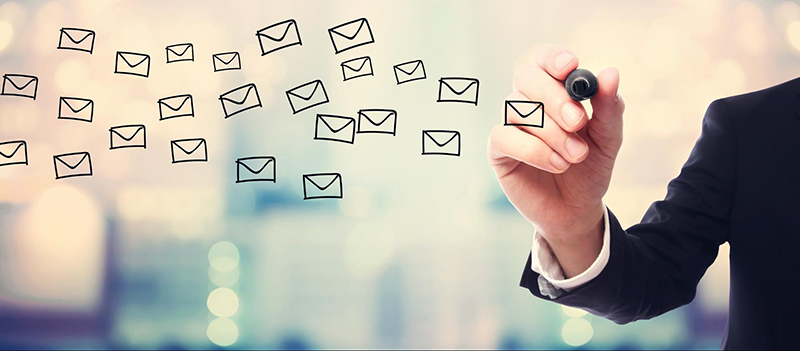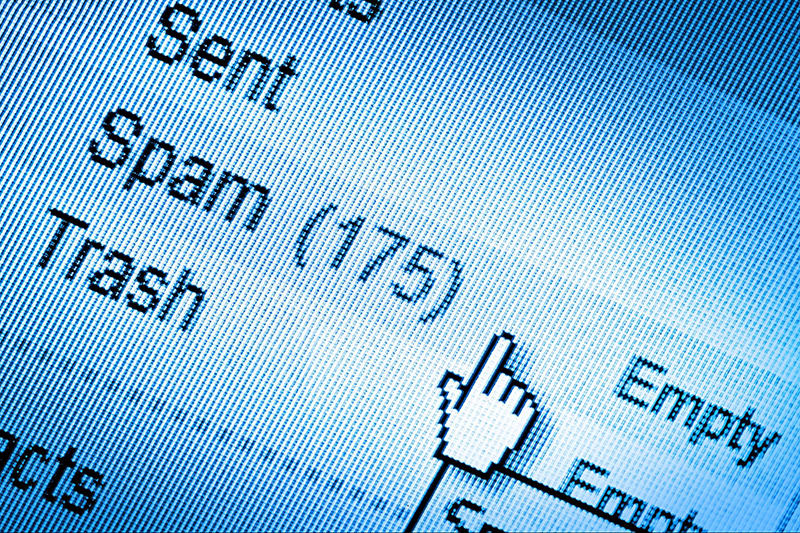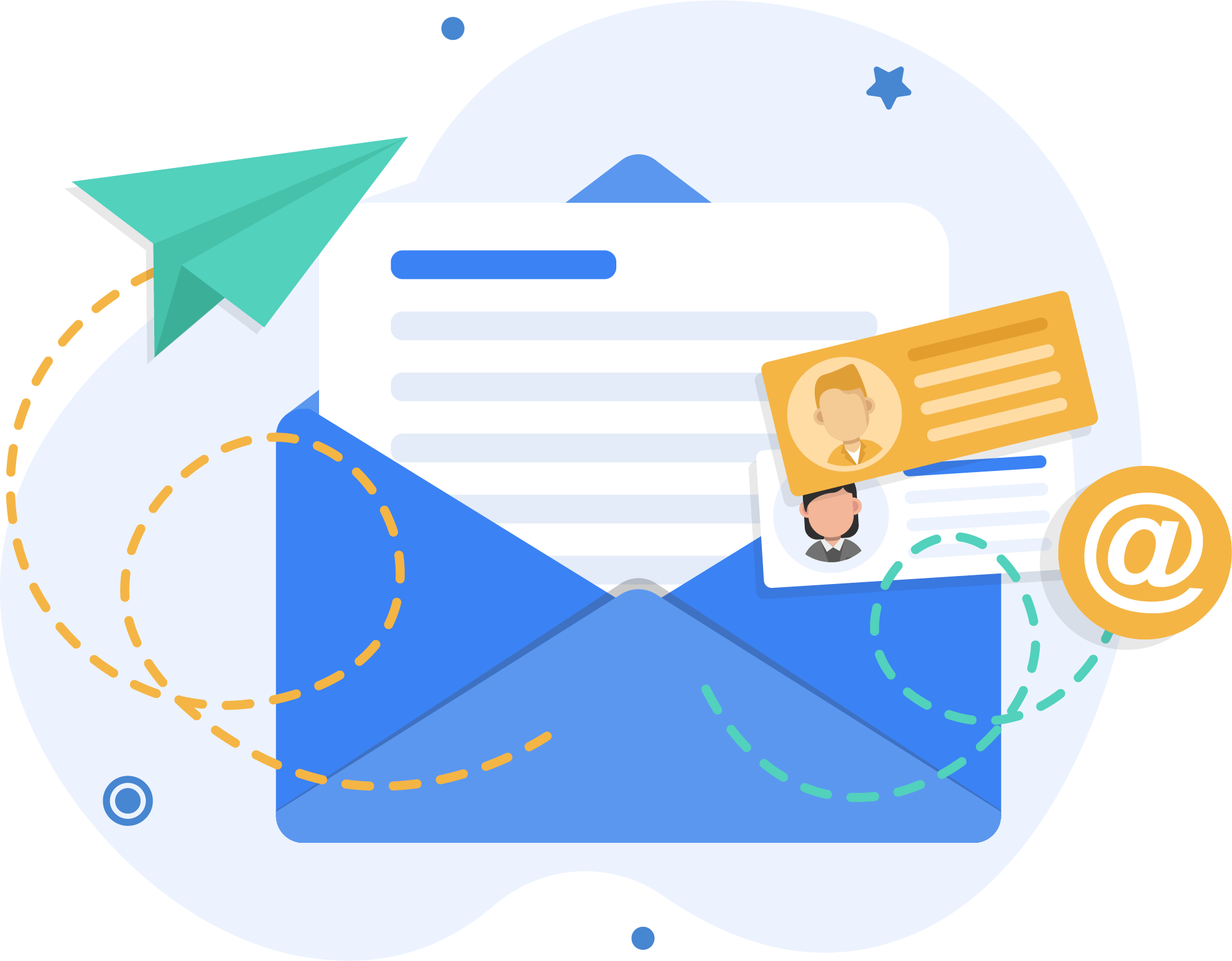As a small business, you must take advantage of every opportunity you can to connect and retain your customers.
Although social media and Pay-Per-Click (PPC) advertising can be invaluable sources for connecting with your customers, email still yields the highest return on investment . For every dollar spent on email marketing, businesses can expect to see an average return of $ 44. If you are not getting these results in your campaigns, you probably need to look for some fresh ideas. Using the best practices of email marketing you can transform those problems into profits.
Are you trying to get more subscribers to open your emails, read them, and click on your links as well as having more people look at your products and services when they receive your campaign messages?
In this publication, we give you 6 practical tips to improve the engagement you achieve through your emails and thus achieve a better return on your investment in campaigns.
What do I need?

(Source: stock.adobe.com )
First of all — if you're not using a reputable email marketing service provider (ESP) with easy-to-use features, you should. Webmail-like services (like Outlook and Gmail) don't give you the flexibility you need to precisely target your customers.
ESPs are specifically designed with marketing in mind. They offer advanced features and usability to create campaigns that webmail-type email sites cannot. With accessible interfaces, easy management of mailing lists, email templates, and campaign reports, ESP's are as essential to your business as a "dot" to a com.
Choosing an established ESP with a solid reputation can also help you avoid the spam folder. The more emails from a particular ESP are flagged by spam filters, the more scrutiny they will have to go through. A good reputation with spam filters (your "sender score") is not only important but essential to the longevity of a good ESP.
This is the reason why we have a strict anti-spam policy, with no tolerance. You can use our exclusive Spam Doctor tool to evaluate your messages for any red alerts before you click send.
Using a reputable and reliable ESP will improve your workflow, allow you to create campaigns and the functionalities related to managing your campaigns and lists, all this for better delivery results. Give your messages a greater chance to reach your subscribers.
Do I need an Expert?

(Source: stock.adobe.com )
Although, in short, you could benefit if you leave your email marketing in the hands of a team of experts, being a small company, you probably do not have the funds to do so.
ESPs give you the technical side of an expert marketing team, but without the cost. These tools are extremely easy to use. Once you understand the essential techniques in leading email marketing repertoires, you will have all the experience you need to implement effective, customer-centric email campaigns.
Metrics

(Source: stock.adobe.com )
Creating a world-class email campaign requires more than ESP and a few simple instructions. You need to know what you are trying to achieve, what you need to do to achieve your goals, and how you can use the tools you have to get there.
A good ESP offers you the data of your campaigns in such a way that you can better understand where you are and where you need to be. You need to focus on the best data sets to measure customer activity, email deliverability, and the value you get from your email marketing efforts.
Here's a quick guide to the key metrics:
- Open rate: The percentage of emails that are opened by the recipients.
- Link Click Rate: The percentage of people who have clicked on links in your emails that lead to your site.
- Unsubscribe Rate: Subscribers who unsubscribe from your mailing list using the links or buttons that are provided in your emails for that purpose (opt-out).
- Hard Bounce: The percentage of emails you send that have "bounced back" because the email address it was sent to does not exist.
Using these performance indicators (KPIs) as a measure, compare the numbers for each email campaign you run. Check out the impact of the advice offered in this post.
Data-driven approaches have proven increasingly effective in targeting customer-centric marketing efforts. They can save valuable time and resources by knowing exactly what email tactics work for your industry, your products, and your target audience.
1. Incentivize Potential Subscribers

(Source: stock.adobe.com )
Without subscribers to your mailing list, your efforts to create successful campaigns will be wasted. Any message you send will produce zero results if you can't find a way to get visitors to your website to give you their email.
The truth is, the average internet user will not give anyone their email just because they ask for it. You need to give them an incentive — something “beyond” simply offering them services or products. More than 95% of visitors will not make a purchase on their first visit, so you need to find other ways to get their details to you to contact them later.
Fortunately, those in the know have found the incentives that work. According to research, visitors are more willing to share information about themselves in exchange for authoritative reports (or “white papers”) that provide detailed information on issues of interest. Second, 63% of people would share information about themselves if they obtained an e-book. Third-party webinars, case studies, and analytics also score highly in the percentage of people who want to send their emails in return.
Whether we use an ebook, report, or webinar to incentivize potential subscribers, whatever content you offer must be relevant to your target customer. Think about what your customers would like to read or see. What are the problems they encounter in their daily life that you can offer professional advice for? What are their concerns?
If your business is a repair shop (the third most common business among small businesses in the United States), you could offer your customers a free book on solving simple technology-related problems, or on how to set up their mail or make that one window reappears when it has been hidden after another.
These are the kinds of solutions that people search for on their devices on a daily basis. If you offer valid solutions to solve common problems, you will see more surfers click * subscribe *.
2. Do It One-Click (and Tell Visitors What To Expect)

(Source: stock.adobe.com )
Don't ask for too much information.
Although your visitors may appreciate the generous incentive you offer them, it is very likely that they will not stay long to complete the registration form if it is too long. Research indicates that an optimal length for online forms should be between 2-5 steps. Once you've converted your visitors into subscribers, you can more easily gather additional information that will help you better understand how to meet their specific needs.
Position your registration box near the top of the page so that it can be easily located by both new customers and those who visit your site again. Don't make your users have to juggle to sign up to your list. A simple registration box showing the data fields and a one-click button to register (your call to action (CTA)) should suffice.
The inclusion of a button has proven to be an increasingly effective way to maximize subscriptions. Additionally, allowing users who have already logged into Facebook and Google accounts to log in with these credentials relieves them of the need to fill out a form. Reducing sticking points, such as filling out forms, is essential to optimizing subscribers' journey to purchase.
Add text that tells subscribers exactly what they are going to get. If you use your mailing list primarily to send out weekly newsletters on specific topics of interest, let them know. If you only send monthly updates to your product line, that's what you should tell them. Be clear and honest with your potential customers and tell them what they are signing up for. This will allow you to develop greater confidence in your brand and you will get subscribers that you can keep.
3. Watch the Shipping Time

(Source: stock.adobe.com )
They say that " timing is everything." With email marketing, it certainly matters.
Both the frequency and time of day your emails are sent have been shown to affect performance indicators (KPIs).
At the very end of the scale, if you spam your customers every night from 1 a.m. to 5 a.m., whatever the level of your content, you are likely to get a high number of unsubscribes. . But if you only send annual emails to your subscribers, they will either forget about you or fulfill the need or desire that drew them to your products with another source or company in the first place.
Without a doubt, choosing the right moment is key. But where is the middle ground? What is the best time to send emails, to get the highest levels of engagement from your customers?
Well, according to the experts ... 10 am
At 10 am, you can send your message to your subscribers' inbox before the usual mid-morning breaks, lunches, and cups of coffee. Those who work in offices are most likely near their desk, having already checked their mail and deleted everything that was not a priority.
However, the 10 am peak is only 7% more effective than other hours. Don't send all your campaigns at 10 o'clock. Vary the time to see which submissions get the best results with your audience. Research shows high rates between 10 a.m. and 12 p.m., so as long as you send your emails within this period, you should get a high degree of engagement.
The frequency is a little harder to hit. In general, we could say that the best specialists in digital marketers contact with a single email address between 2-5 times per month.
This is a good rule of thumb. But the real answer is that you should contact an email address only when you have something of value to offer.
If you offer free courses or webinars, you may email daily support and tips to many subscribers. The frequency of your email for the months in which you send additional content like this can be high; never mind. This is relevant, expected, and specific content. p whether your subscriber wants to receive it.
The best advice to retain your customers is to provide something of value in every message you send.
4. Segment Your List

(Source: stock.adobe.com )
Email frequency is so difficult to advise because marketers are moving more and more away from "general" emails to more specific campaigns. Send your campaigns to the most relevant subscribers and different segments of your list will receive emails at different times.
Segmentation gives you the flexibility to adapt to the changing needs of your diverse subscribers. Instead of emailing everyone on your mailing list, you target only the most relevant customers with the most relevant information. Divide your list into segments to send specific emails for each group and thus be able to achieve better engagement in each campaign.
It may require you to be very careful to set the best characteristics to group your subscribers. The effectiveness of your campaigns depends not only on making the segmentation but also on the precision with which you obtain it. But being a small business, chances are you already know or have a deep understanding of your customers.
Many small businesses, such as insurance and travel companies, divide their clients for other purposes because they offer client-centered packages (for example, for clients 18-30, 30-60, and over 60, specific vacations for a certain age range). Your business can have standard operating procedures (SOPs) like these that are easily and effectively transferable to target groups.
Use the knowledge you already have of your business and your customers to classify the people who follow your products and services into specific segments. This will guide you to define the best categories to segment, create consistency between your sales channels, and contact your customers in a way that fits your business.
5. Make it Personal

(Source: stock.adobe.com )
If you're already tailoring emails to specific customer types, why not make them unique to each subscriber?
At a minimum, the information on your mailing list should include the names of your subscribers. As you interact more with the mailing list, you will gain more data to continually increase your ability to understand what they want. Use the tools available to strategically place this information in your emails to offer a more personalized experience.
Personalization has been proven to increase customer engagement by up to 74%. Even just a little bit of personalization can make a customer feel special. Simply inserting the customer's name in the subject line has been shown to make messages 26% more likely to be opened by recipients.
You can create birthday messages with a personalized gift certificate for your most active subscribers that include custom fields for subscriber name and birthday date. Or you can use personalization to give more detailed information about their accounts to your customers. Send emails with personalized items related to subscribers' accounts for alerts, reminders, and notifications, perhaps monthly purchase records or service usage details.
Take advantage of whatever information you have that you can use to make your messages different for each recipient. Relevance translates to interest and usage - the driving forces behind branding.
6. Write Subject Lines That Hook

(Source: stock.adobe.com )
We've said it before and we'll say it again: you won't win anyone over your emails unless they read them. Surprisingly, 47% of email recipients open emails based solely on the subject line, which means yours should hit the mark.
Your subject lines should create reasons to open. These reasons can include curiosity, interest, urgency, or even apprehension. Engage your reader by speaking to them with purpose and intention. Consider why they would want to open your emails. If your subject line doesn't make them aware of the value they'll get from opening, they won't.
Getting good reasons to open the message that are suitable for the subject lines, limited to approximately 65 characters can, of course, be difficult. More than 205 billion emails are sent every day. How do you create a subject line that is unique, that can compete with the hundreds of emails your customers receive daily?
You may need a little inspiration. Here are some of our most used and tested subject lines, you can use them in your campaigns:
- <FRIEND'S NAME> Thought You Might Like This ( curiosity )
- The Offer Ends At <TIME> ( urgency )
- Know This About <THEME> ( interest )
- Me …. <CONFIGURATION> AND <REVELATION> ( surprise )
- OK <NAME>, We need to talk. ( apprehension )
Use these templates in your own posts, or use them as a basis to tailor them to your business, your industry, and your customer base. Go ahead with the recognition that what you put into your issue is important.
7. Dodge Spam Filters

(Source: stock.adobe.com )
It has happened to all of us. That all-important email you have to reply to, and it ends up in your spam tray.
As a result, there is something inexplicable about whether an email is welcomed or marked as spam and out of sight of the recipient. Spam filters have become increasingly sophisticated over the years. Such a large number of features are analyzed to evaluate the usefulness of an email, that it is not difficult for you to get caught.
If you can give these filters the right information, in the right way, you can ensure that the majority of your emails pass scrutiny. You need to know what spam filters are looking for.
Here's a helpful guide to make sure your emails get exactly where you want them to go :
Don't Use Purchased Lists
Buying an email address list might seem like a quick and easy way to grow your pool of potential customers. But, purchased lists can do you more harm than good. Sending emails to people who aren't really expecting them can really do a lot of damage to your brand's reputation.
In the best of cases, your messages will end up in the trash, in the worst, your address could end up permanently marked and you would have to set up a new domain and start over.
Partner With a Consolidated ESP with Good Reputation
ESPs that don't prevent their users from spamming can earn a bad reputation for spam. If you use one of these providers, your shipments are more likely to be flagged as spam no matter who you send them to or what you send them. You can avoid this by using an ESP with a solid reputation and a strict anti-spam policy.
Use Grammar Correctly (and Don't Yell!)
If you are not able to write your messages with correct grammar, you could run the risk of being marked as spam for that factor. In particular, some risky tactics in this regard are to type all capital letters (considered the equivalent of yelling in an email, as, overuse punctuation marks (such as "!!!!" and "?????").
Your Name as Sender Must Be Clear and Recognizable
Many people are unlikely to open your emails if they don't recognize who they are from. The sender's name should be simple to read at a glance and tell the recipient that your email is from a company or person they are familiar with. Use the same sender name for all emails so subscribers know what to look for in their inboxes when they want to find you.
Use a Spam Checker to Ensure the Deliverability of Your Emails
Use a specific spam checker to make sure your emails are not flagged as spam. These tools verify items that you cannot verify yourself. For example, there are many words and phrases that could contribute to your email being marked as spam, you could not verify all of them. Use a spam checker to analyze your emails and verify them against the criteria of spam filters. Our Spam Doctor takes care of this for you.
As Time Goes By And Your List Grows
As your mailing list continues to grow, you may notice that your open and click rates decrease and your hard bounces increase. Email accounts are deleted or not used all the time. Collecting more and more addresses means that you will have a greater number of inactive subscribers. But sending emails to inactive subscribers can skew your data and put you under scrutiny from spam filters.
At this point, be sure to do a cleanup. Delete those inactive addresses as often as you can to minimize their impact on your company's numbers and reputation. There are specific applications that can help you do this.
Once you've cleaned up your list, you should be left with only active subscribers who are receiving, hopefully reading and clicking, their emails.
And don't forget to check the figures. After optimizing your posts using the tips above, start to track your stats more carefully. See which metrics (open rates, click rates) show good results, and which could improve. Use the information you have to iteratively increase the effectiveness of your email marketing efforts for the best performance.
SourceSuggested Articles:






